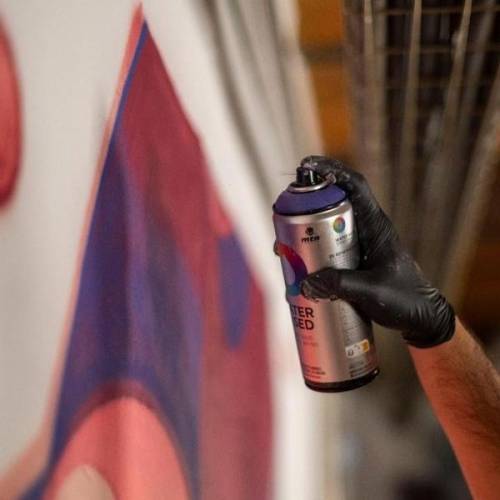In the evolving world of design, construction, repair, and manufacturing, the role of finishing is critical. It’s not just about color; it’s about protection, identity, and transformation. Spray paint has emerged as a powerful tool in this space — combining ease of use with a professional finish that rivals traditional painting techniques. Whether in automotive detailing, home décor, industrial machinery, or creative expression, this solution offers a practical and efficient approach for nearly every surface imaginable.
What It Is and How It Works
This form of aerosolized coating comes pre-mixed and sealed in a pressurized canister. Once the nozzle is activated, a propellant forces the mixture through a small valve, converting it into a fine mist that dries rapidly on surfaces.
Unlike brushes or rollers, this method allows for the even coating of complex shapes — including corners, curves, and textured materials. It’s often the first choice in projects where speed, precision, and finish quality are key. From metal fixtures and wooden décor to art installations and plastic furniture, the technology behind this application ensures consistent coverage without brush strokes.
Types and Finishes for Every Surface
A wide range of formulations has made it possible to target specific project needs. Each variant is designed for optimal performance depending on surface compatibility and environmental exposure.
Acrylic-based options are commonly used for both indoor and outdoor settings due to their water resistance and quick-drying properties. Enamel-based variants provide a hard, glossy result, ideal for metals and frequently handled objects. Lacquer finishes deliver an ultra-smooth, high-gloss aesthetic and are preferred in woodworking and luxury refurbishing.
Specialty blends continue to expand the options available. High-heat resistant formulas are used for items like grills and engine components. Chalk-finish versions have gained popularity in upcycled furniture and vintage projects. Other creative variations include metallics, glow-in-the-dark, granite textures, and stone-like appearances, offering an artistic edge in residential and commercial designs alike.
Industries That Depend on Aerosol Finishing
This application method serves as a core function in numerous sectors due to its precision and adaptability. In the automotive world, it is essential for touch-ups, restoration, and custom detailing. The fine mist ensures a flawless appearance even on curved or intricate parts like bumpers and mirror housings.
In construction, professionals use it for marking zones, coloring structural elements, and treating metal surfaces against corrosion. It is especially effective in areas with irregular geometry where brushes fail to reach.
Designers and decorators use it for everything from revamping furniture to creating accent pieces. Set designers and event planners rely on its fast-drying properties to produce temporary but vivid transformations. Meanwhile, artists leverage its portability and layering potential for murals and installations.
Manufacturers apply it to machinery, equipment, and branding surfaces as part of their finishing and labeling processes, making it a valuable part of industrial production lines.
Why Professionals Choose It: Benefits and Features
The reasons for this finishing method’s popularity are both practical and performance-based. Compared to traditional painting systems, it offers a host of advantages:
- Speeds up the application process across large or detailed surfaces
- Delivers smooth, streak-free finishes even on uneven materials
- Reaches into complex angles, crevices, and curves with ease
- Compact packaging ensures portability and ease of use
- Dries rapidly between coats, reducing overall project time
- Available in various aesthetic effects, from glossy to textured finishes
These characteristics have made it a trusted tool for both quick repairs and large-scale transformations.

Correct Techniques for a Superior Finish
Despite its ease of use, achieving the best results requires preparation and technique. The surface must be properly cleaned to remove oils, dirt, or peeling coatings. Sanding helps to smooth imperfections and promotes better adhesion.
Shake the container well before each use to ensure the mixture is fully blended. Begin by testing on scrap material to calibrate the distance and control. A steady hand, moving side-to-side in a sweeping motion, will help avoid runs and pooling.
Maintain an ideal spraying distance — typically 8 to 12 inches from the object — and apply multiple thin coats rather than one heavy layer. Allow proper drying time between layers for optimal finish and durability.
Working in a ventilated area is crucial, and safety gear like gloves, goggles, and a mask should always be used to avoid exposure to vapors or overspray.
Environmental Awareness and Proper Disposal
Environmental consciousness has led to significant improvements in aerosol-based coatings. Traditional formulas contain VOCs (volatile organic compounds), which can contribute to air quality issues. To mitigate this, modern manufacturers are offering water-based and low-VOC versions that are both safer and more sustainable.
Bio-based options, using renewable materials, further reduce the environmental footprint and are especially useful for indoor and child-safe projects. Additionally, some brands now produce containers with recyclable materials and minimize propellant usage.
Disposal of used cans is another area that requires attention. These pressurized containers are considered hazardous and should never be punctured or incinerated. They must be disposed of through local recycling programs or hazardous waste collection sites. Fully discharging the can before recycling is standard protocol.
Creative Innovation and Modern Use Cases
In the contemporary design world, this form of coating is more than just functional — it’s a design element. Architects use it to create textured and visually dynamic facades. Anti-graffiti layers, hydrophobic coatings, and thermally-insulated surfaces are now available in aerosol format, expanding their utility beyond decoration.
Prototyping in product design has also benefited. Quick color application allows for faster iteration without requiring complex painting setups. The fashion industry, too, is experimenting with fabric-safe aerosols to apply designs directly onto garments or shoes, turning utility into wearable art.
Other exciting uses include chalk variants for temporary sports lines and event signage, or phosphorescent versions used in night-themed art and décor. Technological upgrades, such as HVLP (High Volume Low Pressure) spray systems and automated arms, have enhanced accuracy, reducing waste and boosting efficiency.
Conclusion
As a finishing method, spray paint continues to shape industries, projects, and creative possibilities with unmatched efficiency. Its ability to deliver consistent results on various surfaces, combined with modern formulas that support both performance and sustainability, secures its relevance in today’s fast-paced, design-forward environments. Whether you're restoring a piece of furniture, customizing a vehicle, or exploring creative design, this versatile tool provides a powerful way to protect and personalize surfaces with precision and style.



Add Comment